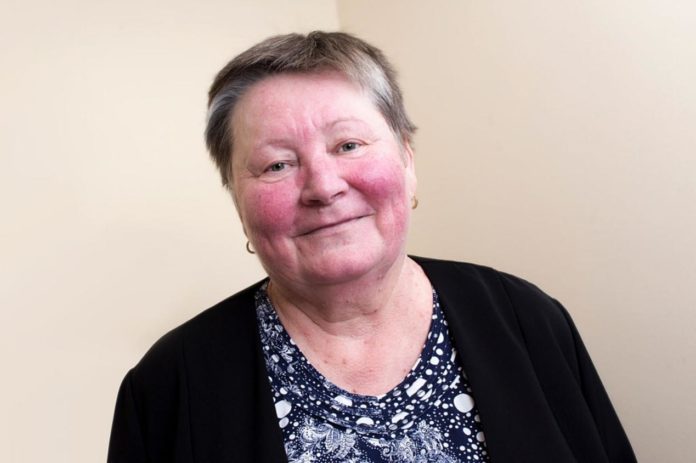Why do your cheeks turn red and what’s the best way to treat it? If you’re thinking about Rosacea may cause redness in the face, but it isn’t the only condition.
Rosacea is a long-term chronic inflammatory skin disorder that causes mild episodes of facial blushing or flushing. Excessive blood vessels can also turn your cheeks red, so how do you know which one you have?
Lisa Borg, Nutritional Therapist at Pulse Light Clinic, can help you to understand the differences between the two.
Rosacea symptoms include constant red cheeks, feeling itchy and flushed, broken veins, burning, bumps under the skin and uneven skin texture, flushes after eating, and stomach issues.
- Scientists in Fear of This New Predator From Red Sea Eating Native Species in Mediterranean
- Does This Mean We Stopped Being Animal and Started Being Human Due to ‘Copy Paste’ Errors?
- The One Lifestyle Choice That Could Reduce Your Heart Disease Risk By More Than 22%
- Aging: This Is What Happens Inside Your Body Right After Exercise
- Immune-Boosting Drink that Mimics Fasting to Reduce Fat – Scientists ‘Were Surprised’ By New Findings
On the other hand, excessive blood vessel symptoms include occasional red cheeks, excessive flushed face after the gym, appearing red after a hot bath or shower.
According to her, stress play an important role on rosacea.
As explained by Ms. Borg:
When an individual experiences stress, the body responds by releasing a series of hormones and neurotransmitters that create internal changes to meet the challenge of that stress. The body responds to all stress as though it requires physical action.
At this initial stage, several internal changes occur. Sufferers of Rosacea know just how stressful this condition is to live with on a daily basis. The long term effects of coping with Rosacea result in a reduced ability to handle everyday stresses, even those unrelated to rosacea.
It’s unknown why stress plays a role in rosacea progression through the four stages, says Lisa.
She continued:
It appears to be that vessel walls are compromised to begin with, which suggests nutrient deficiencies and faulty digestion. Whether Rosacea began with a stressful event or not, stress is most certainly a part of living with rosacea.
According to experts, Rosacea has four subtypes as mentioned below:
Subtype 1: Erythematotelangiectatic rosacea
Mainly characterized by flushing and persistent central facial redness of the skin. Stinging and burning sensations and roughness or scaling may also be reported. A history of flushing is common among these patients.
Subtype 2: Papulopustular rosacea
Characterised by persistent central facial redness of the skin with transient papules or
pustules (or both) in a central facial distribution. However, papules and pustules also may occur around the mouth, nose, and eyes. Burning and stinging sensations may be reported and it has often been seen after or in combination with subtype 1, which may be obscured by persistent erythema, papules, or pustules, and so subtype 1 may become more visible after successful treatment of masking components of subtype 2.
Subtype 3: Phymatous rosacea
This includes thickening skin, irregular surface nodularities, and enlargement. Rhinophyma (a large, bulbous, ruddy appearance of the nose) is the most common observation, it can be seen elsewhere, for example, the chin, forehead, cheeks, and ears. Subtype 1 may also be present and subtype 3 has frequently been seen after or in combination with subtypes 1 or 2.
Subtype 4: Ocular rosacea
This should be considered when a patient’s eyes have one or more of the following signs and symptoms: watery or bloodshot appearance, foreign body sensation, burning or stinging, dryness, itching, light sensitivity, blurred vision, telangiectasia of the conjunctiva and lid margin, or lid and periocular erythema. Ocular rosacea is most frequently seen together with signs and symptoms of rosacea on the patient’s skin. However, these signs and symptoms are not a necessary prerequisite and ocular Rosacea may occur in up to 20 percent of patients before symptoms are seen on the skin.
Stress and rosacea are intimately connected, continued Lisa.
She said:
Rosacea exacerbates stress and vice versa. Therefore, if the Rosacea sufferer has become less resistant to stress, has digestive problems, and feels rosacea is out of control, it is time to get onto a combination programme of nutrition and IPL to address rosacea, digestion, and stress.
- Scientists in Fear of This New Predator From Red Sea Eating Native Species in Mediterranean
- Does This Mean We Stopped Being Animal and Started Being Human Due to ‘Copy Paste’ Errors?
- The One Lifestyle Choice That Could Reduce Your Heart Disease Risk By More Than 22%
- Aging: This Is What Happens Inside Your Body Right After Exercise
- Immune-Boosting Drink that Mimics Fasting to Reduce Fat – Scientists ‘Were Surprised’ By New Findings
